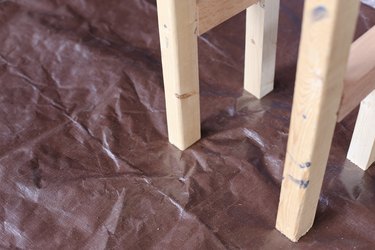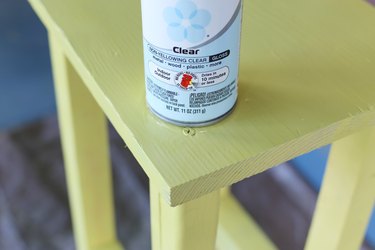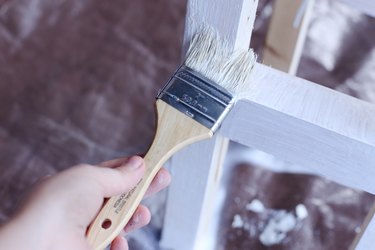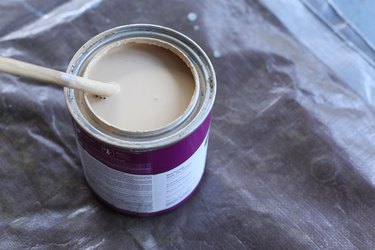Things You'll Need
Dropcloth
Orbital or power sander (optional)
Sandpaper or sanding block: 180- and 220-grit
Tack cloth or damp cloth
Spray-on Method:
Safety glasses
Painter’s mask
Spray-on primer
Enamel spray paint
Polyacrylic spray sealer
Brush-on Method:
Paintbrushes, 2
Primer
Stir stick
Latex furniture paint: semi-gloss
Clear-coat polyurethane sealer

Customize wood bar stools to complement any style of interior decor by simply painting them. Using unfinished bar stools saves stripping off a previous finish; however, if you're updating stools you already own or some bargains acquired at a yard sale, you'll first need to remove the old finish with sandpaper. An orbital or power sander saves time, or you can do it by hand. Painting methods vary; traditional brush-on paint is an option, but many do-it-yourself decorators prefer spray paint because of all the small parts on bar stools.
Spray-on Method
Step 1

Lay down a dropcloth to protect the surface you're working on. Using an orbital sander, sanding block or a sheet of sandpaper, sand each stool thoroughly to remove any shiny lacquer or varnish finish or previous paint or stain. Start with a lower grit sandpaper and finish with the higher grit paper.
Video of the Day
Step 2

Remove all sanding dust by wiping down the stool with a tack cloth or damp cloth.
Step 3

Flip the stool upside-down. Put on your safety glasses and painter's mask. Spray on two or three thin coats of primer. Allow each coat to dry and lightly sand the stool before applying the next coat. Repeat on the seat or top after flipping it right-side-up.
Step 4

Spray on your paint color in a thin coat, holding the can about 6 inches away from the stool. Use short bursts of spray for better control and to avoid runs.
Step 5

Allow the first coat to dry. Apply additional thin coats using the same method until you are happy with the color and coverage. Flip the stools over and repeat to cover the other side. Allow the paint to dry thoroughly, according to the manufacturer's instructions.
Step 6

Spray on an even coat of polyacrylic sealer using the same method as the spray paint.
Brush-on Method
Step 1

Prepare the stools following Steps 1 and 2 of the spray-on method. Brush on a thin coat of primer. Allow the first coat to dry, lightly sand and apply another thin coat. Repeat for a third coat.
Step 2

Open the can of latex paint and stir with a paint stick. Brush on the paint, following the grain of the wood. Apply several thin coats for even coverage. Allow the paint to dry completely before sealing.
Step 3

Brush on an even layer of clear-coat polyurethane to protect and seal the finish. Allow the finish to dry according to the manufacturer's instructions.
Tip
Condition paintbrushes that you plan to use with latex primer and paint by first running water over them and shaking out the excess moisture. This makes them easier to clean after painting as well.
Remove dust and debris from the sanding process quickly and easily with a vacuum.
Try milk paint for an antique, whitewashed or distressed finish.
Use painter’s tape to create special effects such as dipped color or stripes on the legs or a checkerboard pattern on the seat.
Warning
Always paint in a well-ventilated area, especially when working with spray paint, such as in an open garage or outdoors.
Painter’s masks can usually be found where paint is sold.
Video of the Day